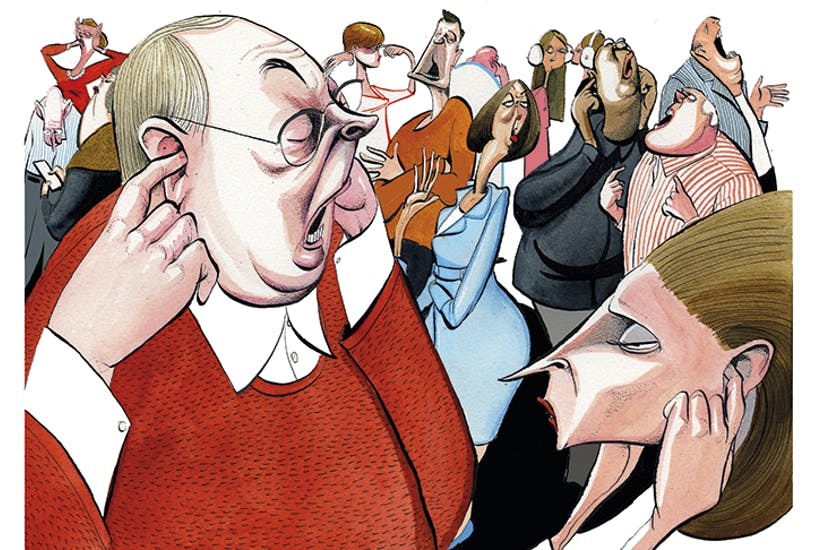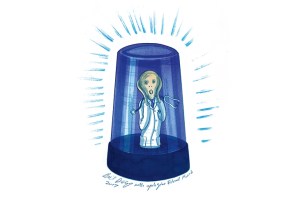Unless you happen to live under a rock, this week you became aware of Dr. Robert Malone. He’s a virologist and immunologist who has become a lightning rod of controversy — and for good reason.
Alongside laying claim to the invention of mRNA vaccines, Dr. Malone has spoken about a hysteria that has swept the United States, something he refers to as mass formation psychosis.
Although I agree with many points Dr. Malone has made, and I believe that many of the pieces written about him have been needlessly vicious, the idea of mass formation psychosis is plain wrong. Let me explain why.
Psychosis, an abnormal condition of the mind, renders a person unable to differentiate between the real and the imaginary. It’s a very serious condition with no cure, only various types of treatments. Symptoms often include delusions and hallucinations, with those afflicted hearing voices and/or seeing things that are not real.
In other words, someone suffering from psychosis has thoughts that are not consistent with reality. But, across the country, most people’s fears are consistent with reality. With a pandemic that has plagued society for two years, people justifiably fear losing their jobs, their loved ones, their homes and their freedom. Also, psychosis is something that occurs on an individual level, not a societal one.
Mass formation psychosis is not possible. It’s a clickbait term designed to titillate rather than inform. As Professor James MacCabe, a professor of epidemiology at King’s College London, told me, “mass formation psychosis is not a recognized condition” and it has “nothing to do with psychosis.”
What we see instead, I suggest, is mass formation paralysis, driven by a sort of learned helplessness. To be clear, by “paralysis,” I don’t mean the literal loss of muscle function. I mean a psychological paralysis.
As the author Kendra Cherry has noted, learned helplessness “occurs when an individual is repeatedly subjected to an aversive stimulus that it cannot escape.” Think of a woman in an abusive marriage, for example. Initially, when subjected to various abuses, she fights back. However, after time, seeing no end to the torture, she waves the white flag and gives up.
Now let’s apply learned helplessness to the current state of the pandemic and accompanying restrictions. With vaccinations, booster shots, mandatory masking, social distancing, forced quarantines and an overall inability to resume our normal lives, it’s not hard to see how a sort of mass formation paralysis could grip a community, a city, or even a country.
As the researcher Rand Waltzman warned back in 2017, the internet and social media have provided “new ways of constructing realities,” resulting in a sort of “uncertainty that leaves us exposed to dangerous influences without proper defenses.” Social media has undoubtedly played, and continues to play, a vital role in shaping and reshaping our realities. But when it comes to the pandemic, and the ways in which we have come to view the dangers posed, mainstream media outlets have played a more significant role. Through the weaponization of fear, millions of Americans have been conditioned to fear the worst. This is not a glitch in the system; it’s by design.
In December 2020, the authors of an aptly titled paper, “Why Is All COVID-19 News Bad News?”, documented the ways in which the American media chose to cover the pandemic. More specifically, they focused on the tone of the messages being communicated. According to the authors, “91 percent of stories by US major media outlets are negative in tone versus 54 percent for non-US major sources and 65 percent for scientific journals.”
In the US, the negativity appeared to be intentional, with “stories of increasing COVID-19 cases” outnumbering “stories of decreasing cases by a factor of 5.5,” even during periods when new cases were actually declining.
Is it any surprise, then, that the rate of depression, a close relative of learned helplessness, continues to skyrocket? Yes, the pandemic has played a significant role in creating the malaise, but so too has the manner in which the pandemic has been covered by mainstream media outlets. From Russiagate to the threats posed by Covid-19, the American people have, for years, been drip-fed a steady diet of fabrications and fear. Many now find themselves paralyzed, unable to see a meaningful path forward. Paralysis, not psychosis, has gripped the nation.


















